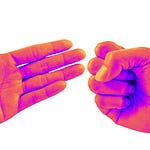A lot of readers might not know this, but for years I was in a cult.
With the perspective of time I can now see it clearly. How could I have been so easily duped? This cult was so subversive that its own leadership, which was diffuse, was largely not aware that it was heading a cult. Leaders, in fact, often suffered the most from the cult’s abusive practices, which, as true believers, they still endorsed. Anyone who openly resisted this cult was threatened with ostracism and destitution, to be cast out from the fellowship and to fend for themselves in the outside world. It was a pretty bleak cult, and it is hard now from this distance to understand its allure.
According to various experts, and I am not one, there are a number of criteria that constitute a typical cult. These experts do not agree on all the indicators or so much as their number, but there is significant congruity. An article by Sasha Blakeley called “Cult Characteristics and Behaviors” captures some of the most commonly-listed criteria, which I will use to describe my cult.
The Charismatic Leader
My cult did not have a leader per se. As I said, the leadership was diffuse, which made it all the more insidious. Instead, this cult slavishly followed and worshipped an unreasonable and impossible ideal as though it were an entity. As an entity, though, this ideal offered little appeal on its own, instead holding out rewards that would flow from its adoration. All of these rewards were material, and real-life examples of the ideal’s greatest adherents and their appreciable gains were exalted with gusto. Most were well-known — celebrities even — who supposedly had gone from ruin to glory just by worshipping this ideal, which of course was largely untrue. Still, from within the cult it all made sense and was quite plausible and deeply desirable.
Ideological Purity
Since the cult followed an ideal, purity of thought was essential. Anyone who resisted or opposed the cult or questioned the truth of its central dogma was mocked, shamed, or punished. The worst punishment, in the cult members’ minds, was banishment and denial of access to the ideal’s rewards. If you were outside the cult, you allegedly would tarry in perpetual lethargy and penury. You could even be denied employment and the ability to sustain yourself.
Conformity and Control
Everyone associated with the cult had to abide by its rules at all times. Although the rules were few, they had ramifications that could affect and regulate every moment of your day, where you spent it, who you spent it with, and what you did. The leadership would enforce the rules and discipline the worst offenders, but most enforcement came from the rank-and-file members of the cult themselves who policed their own.
Mind-Altering Practices
Almost voluntarily my fellow cult members and I would subject ourselves to practices that tended to sever our hold on reality. For instance, self-imposed sleep deprivation was so pervasive that members of the cult would actually compete to see who got the least sleep. Confessing you had a good night’s sleep would expose you to doubt and scorn. Insomniacs were regarded with admiration and sometimes envy. To the cultists, the need for sleep was a weakness and an enemy of the ideal.
Not surprisingly, as with other cults, chemical substance abuse was common. Drugs were needed to counter the effects of sleep deprivation, so caffeine in all its forms topped the list. Among some sets, though, harder stimulants, including illegal substances, might be used to limit the need for sleep or to enhance adherence to the cult ideals even during recreation time — a practice cultists called “playing hard.” Paradoxically, alcohol was a common sleep aid when all that caffeine and the trauma of cultist privation made necessary sleep impossible.
Isolation and Love-Bombing
I already mentioned how isolated cult members were. They spent almost all their time with other cult members, even in their ostensible off hours. Their friends, their lovers, their spouses, indeed their families were rarely not members. Therefore, every conversation and interaction was at least tinged with cultist propaganda and doctrine. Ironically, despite this immersive interaction with other adherents, the rigors of the cult’s practice were such that they often resulted in the dissolution of meaningful social ties, such as lost friendships, separation from family, and divorce.
As for love-bombing, when members were recruited to the cult, which was not a formal or necessarily conscious happening, virtually anything they did that adhered to the cult’s ideals would be met with effusive praise to encourage them to seek the cult’s rewards. Members sometimes received substantial prizes to encourage and further hook them, but these benefits could never compensate for the gargantuan efforts their devotion would demand.
Us-vs-Them Mentality
Anyone who was not a member of the cult or did not profess and practice its ideals was regarded with extreme pity, utter contempt, or fear — sometimes in combination. They were considered benighted souls with no hope of achieving any of life’s rewards or, less generously, as sinners whose reprobate beliefs and lives were to be condemned. Anyone attempting to leave the cult would face certain abuse. I can assure you that there are current adherents to my former cult — knowing and unknowing — who are reading this and regarding me in just this way.
Time and Energy
Time and energy were commodities of the highest value to the cult. This meant that — in addition to sleep — exercise, self-improvement, and outside interests needed to be sacrificed, limited, or adapted to match the cult’s standards. As a result, cult members’ diets often privileged processed foods, such as fast food and power bars, which were high in carbs, particularly sugar. Such unhealthy food was just another drug for cult consumption. In this sense, it was a death cult that did not value the wellbeing or lives of its members or even its leaders. Everyone was expendable and replaceable.
Apocalyptic Thinking
While not every cult is apocalyptic, and my cult was not focused on any particular end-times beliefs, such concerns always lurked in the background. Adhering to the cult’s ideals was a way of staving off some sort of vague coming disaster that would ensue if members grew lax or allowed their minds to fill with doubts or distractions. We were doing God’s work, we were told, with the explicit admonition that any other beliefs or practices were the work of Satan and threaten the world order as we understood it.
My Ongoing Escape
I actually can never escape the cult entirely. While I reject its tenets and can see its ideals as ridiculous and its rewards as false promises, its doctrine and practices never leave my mind. What’s more, it is such a pervasive cult that it infiltrates every level of our society — from the schools to the corner office to the White House — and infects our culture like a virus. It is insidious, held up as a sacred virtue and used as an excuse for all manner of poor behavior, which I have written of previously.
Admittedly, this cult is responsible for forging most of what we enjoy and admire, and a lucky few have managed to reap some rewards. Nonetheless, it has probably destroyed far more than it has created, and much of what it has constructed could have been built through other means or was not worth building at all.
Sadly, you are most familiar with my old cult.
Perhaps you are a member.
Perhaps you are a leader in it and don’t even realize it.
My road to recovery has been long and challenging, and I relapse frequently — affected by the tainted example of others around me and slipping into old habit. But ever since I began resisting, I can see how my life has improved. Relationships are stronger, I am healthier, and the returns are great and varied. It is an ongoing struggle to remain free, but I know I will never regret rejecting this cult that has stunted our world.
I am, of course, describing the cult of hard work and overwork, the twisted notion that toil is, in and of itself, the highest virtue.
Perhaps you already knew that.
Perhaps, although besotted by workaholism as I was, you have come to realize you’re a part of this cult.
Perhaps you want to consider another way.
Doing so can be quite challenging, particularly when your employer and colleagues are adherents, but it is vital to recognize your dilemma. Step one, acknowledge the problem is a problem. Step two, recognize that every problem has a solution.
Are you in a chronic overwork situation? Does the cult of hard work pervade your workplace and/or your entire life? Does even your leisure time — how you shape it and how you spend it — reflect the dogma of the cult of hard work?
Whatever your position, role, or rank, you can transform your relationship with work, and I can help. Click below for your free consultation.
Share your thoughts on this topic or participate in a discussion by leaving a comment below or by contacting me directly by email:
You’ll have to register with Substack and sign in to leave a comment, which is painless and free.
Please share this post on social media.
And don’t forget to click subscribe to have Tools+Paradigms sent directly to your inbox. I look forward to hearing from you.
Opening and closing podcast theme music by LiteSaturation from Pixabay

















Share this post